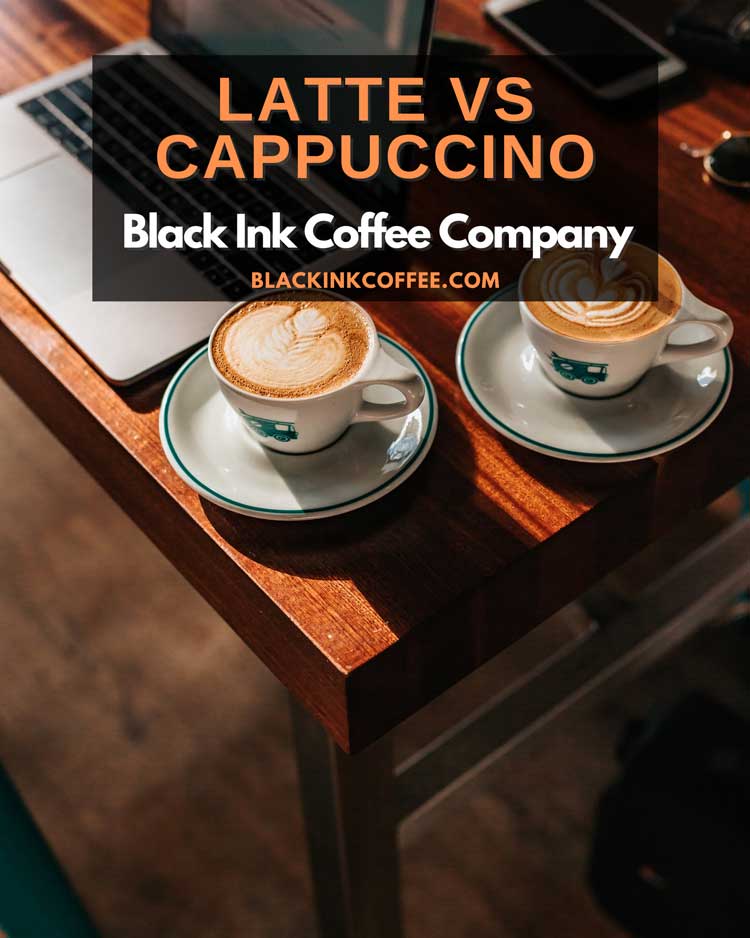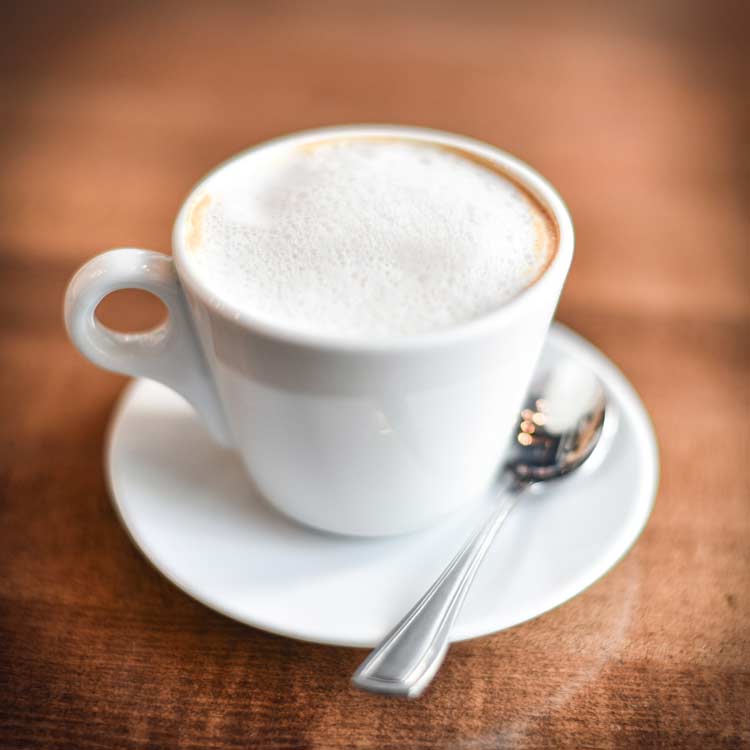
Latte vs Cappuccino Overview: What One Should You Drink?
Since its discovery, coffee has been known as an elixir of life, an ailment for weariness, a cure for fatigue. In short, coffee is a concoction that the world fell in love with, not just because of its unique nutty, bitter, and sweet flavor but also because of its effect on wakefulness and alertness.
For that reason, it comes as no surprise that the latte vs cappuccino debate is still alive and well today, especially with a push for craft coffee. Whether you are unsure if you should buy a fancy latte machine or the best cappuccino maker, we hope that this guide helps you decide. So, let's get into what makes these two drinks so different!
Latte vs Cappuccino
Latte vs Cappuccino; what is the difference? It is not the ingredient list; they are espresso drinks made with coffee, steamed milk, and milk foam. The difference lies in the ratios of said ingredients. And we will get to that, but all in due time.
First, we need to establish what an espresso is and the fact that it is different from regular coffee. It consists of a brewing Italian-origin method that requires high-pressure water to percolate through tightly packed and finely ground coffee. This process gives us a shot of espresso or a small amount, usually and ounce of very concentrated coffee.
On the other hand, regular coffee uses gravity to pull water from the grounds and thus obtain a brewed drink. One can brew entire pots of coffee instead of an ounce or two with each shot of espresso. They are, however, made from the same roasted coffee beans.
We are moving on to our Latte and Cappuccino discussion. Espresso drinks are made with one or two shots as a base and then have other ingredients added. But not in this particular order. We will first talk about the savory Cappuccino.
What is a Cappuccino

The origins of the Cappuccino and its name date back to the 18th century in Vienna, where the Roman Catholic order of Capuchin monks wore robes that resembled the beverage's light brown color; thus, it became known as a Cappuccino by association. Yet we give credit to Italy for inventing the modern-style Cappuccino.
There is a little known fact that when coffee began making its way into Europe, the local clergy condemned it and called it "the bitter invention of Satan." Until Pope Clement VIII decided to taste the beverage and rule in favor or against the diabolical drink. After falling in love with it, he gave it papal approval, and we do not blame him. Moreover, we think he would be happy to know that one of the most popular drink variation would receive its name after a Monastic order.
The cappuccino is simply 1/3 espresso, 1/3 steamed milk and 1/3 foamed milk. It is the latte's foamier sibling.
Coming back to the actual drink, a Cappuccino has the ingredients divided evenly into thirds: One-third espresso, one-third steamed milk, and one-third frothed milk. The way it is made has evolved with time, especially nowadays when baristas are busy with lines of orders that prevent them from dedicating enough time to frothing the milk to its desired airy consistency.
What remains constant is the distribution of ingredients, and it can have sugar added and a sprinkle of cinnamon or cocoa on top. Originally considered a breakfast drink, it has matured into a sweet and quick coffee pick-me-up for fans globally. After making several Cappuccino cups, the measurements come automatically, and the art of frothing milk becomes easier each time. Don't get discouraged if it takes you a few attempts to make it perfect.
An expensive, commercial grade espresso machine is not needed to make a great Cappuccino cup, although it is preferred. Espresso can be brewed with an AeroPress, a Moka Pot, or a French Press, but it will lack the sweet crema that take your espresso shot to the next level. The milk can be steamed on a stovetop, and it can also be frothed by hand.
Overview of the Latte

This beverage contains espresso in the same order as a cappuccino but different amounts. Espresso to steamed milk ratios can vary from one to three or even one to nine. It is a diluted coffee drink, and it is milkier than a cappuccino, making it sweeter. To top it off, it has a skinny layer of frothed milk, and some baristas let their creativity go wild with beautiful designs and pictures on the surface, within the foam.
This beverage also dates back to Italy around the 1800s when they started making them for tourists that thought Cappuccinos were too strong. The correct term is caffe latte; a latte will only get you milk in Italy. And lattes are not limited to coffee; there are Chai lattes and Matcha lattes, to name a few. As long as it contains milk, it can be called a latte.
The latte is simply 1/3 espresso and 2/3 steamed milk. It is the cappuccino's creamier sibling.
This is the less intimidating of espresso-based drinks out there as the milk hides the strong bitterness and acidic flavor of the Cappuccino and promotes the drink to be viewed more as a breakfast option to be made at home. It can also be considered dessert, especially when several other flavors and syrups are added, like hazelnut and caramel.
Making an Italian latte does not necessarily require an espresso machine either. One of the options mentioned above can be used to brew a strong shot of espresso, but even for under 200 dollars, you'll find some quality espresso machines. Then, heated milk is added -about one part coffee to six parts milk- and optional sugar or flavored syrup to taste. Don’t forget the art piece on top of the thin layer of foam.
The GOAT that saved the world

Coffee is one of the most sought-out commodities globally, and coffee shops have become more popular than ever. There are many legends about its origin, and one of our favorites dates back centuries ago to the Ethiopian forests where these beloved beans grow.
It is said that a herder took notice of some of the goats munching on these beans and how they appeared more energetic and alert than their counterparts. Some of them would not even sleep at night. Goat party, anyone?
In case you didn't read our Ethiopian coffee guide, goats are the original founders of coffee, as well as their master (Kaldi).
These reports came to the ears of one of the abbots at the local monastery. He then decided to try a concoction made from the beans and reported the same effects. He was finally able to stay awake during long evenings of prayer, and we can imagine his delight when he was no longer dozing off.
The drink began catching on and expanded globally while new and exciting drink variations started popping up everywhere. We could not imagine our lives without that cup of java in the morning, so we are forever indebted to those goats, herder, and abbot.
A Push For Craftier Coffee
Nowadays, coffee and coffee shops seem to be everywhere, and there is a wide variety of coffee drinks to choose from. To the extent where going into a coffee shop and ordering a specialty drink has become intimidating for some.
From flat whites to cappuccinos to macchiatos, the variations seem endless, as do the add-ons. Yet two drinks stand out in popularity; Lattes and Cappuccinos. These sweet, milky delights satisfy a sweet tooth as well as the need to stay awake and alert. Still, few people know the difference between the two.
We are here to clear all of that confusion and help you become a more knowledgeable coffee connoisseur. You already know about its origins and those smarty-pants goats and herder; let's now get into which option is best.
Verdict

Now that we have learned the difference between the two, there are a few points worth mentioning before concluding as to which one is better. For starters, coffee prices can range from $1.34 to $4.24 for a cup of joe, depending on where you are buying it and the beans' origin.
For example, the most expensive origins are Kopi Luwak, from Indonesia, which are coffee beans that have been partially digested and defecated by civet cats, a small mammal. It is said to be a delicacy. Bucket list material? Maybe. The fact remains that coffee is and will be one of the most acclaimed brewed drinks out there, and we are all for this sweet and energizing drink.
The first official espresso machine was created in 1884, and they eventually made their way into the United States in the 1920s. It is now possible to enjoy these drinks in the warmth of your own home, even if you do not own an espresso machine. We love our baristas, and our love affair with coffee has no end in sight.
In fact, it grows stronger with each new coffee shop and each new variation of coffee drinks now available. The preference between one of the two drinks will vary depending on how much time you have to enjoy your beverage, how strong you like it, and your size of preference.
We recommend that you experiment and try them all. We hope that you will now feel confident when you walk into a coffee shop; you are on your way to becoming a true coffee connoisseur!
